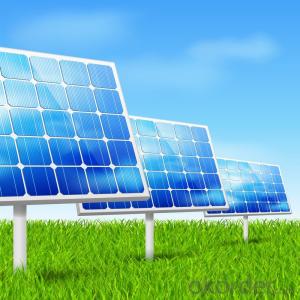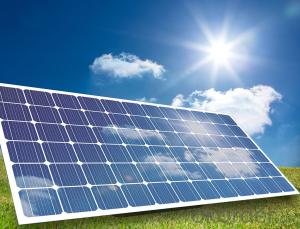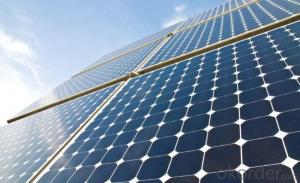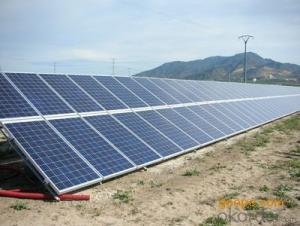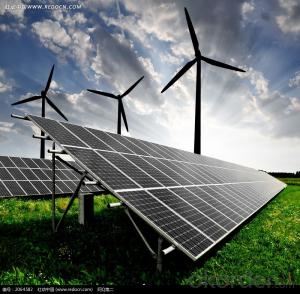Photovoltaic Thin Film Flexible Amorphous Solar Module
- Loading Port:
- Shanghai
- Payment Terms:
- TT OR LC
- Min Order Qty:
- 11 watt
- Supply Capability:
- 1111111 watt/month
OKorder Service Pledge
OKorder Financial Service
You Might Also Like
1.Structure of Solar Module Description
The solar module is an off-gird solar power generator, designed to provide stable and reliable electricity to homes and communities without access to grid electricity or to those regions where are short of power or even without power. The solar module is convenient to move, easy to set-up with reliable performance, making it ideal for situations where emergency power is required. It is an ideal & reliable energy source for a wide variety of applications, ranging from lighting , radios, fans ,televisions ,computers ,refrigerator. The USB port is compatible with all 5V-USB charged devices. It can also act as a back-up power source during emergency situations.
2.Main Features of the Solar Module
1).High conversion efficiencies resulting in superior power output performance.
2).Outstanding power output even in low light or high temperature conditions
3).Optimized design for ease of soldering and lamination
4).Long-term stability,reliability and performance
3.Solar Module Images
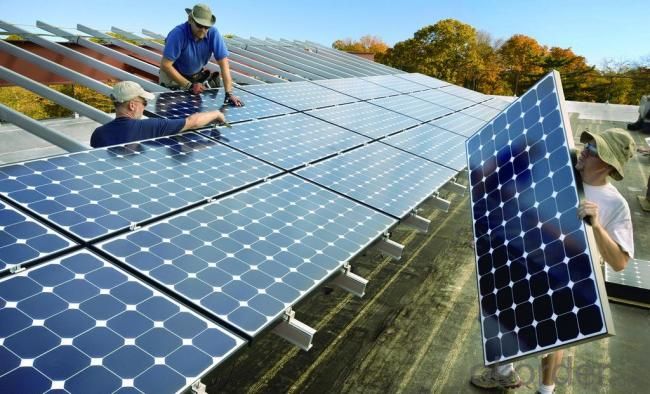

4.Solar Module Specification
| Type | PVL72 11L | ||
| Maximum Power | Pmax | (W) | 72 |
| Voltage at Pmax | Vmp | (V) | 16.5 |
| Current at Pmax | Imp | (A) | 4.36 |
| Short-circuit Current | Isc | (A) | 5.3 |
| Open-circuit Voltage | Voc | (V) | 23.1 |
| Maximum Power | Pmax | (W) | 56 |
| Voltage at Pmax | Vmp | (V) | 15.4 |
| Current at Pmax | Imp | (A) | 3.6 |
| Short-circuit Current | Isc | (A) | 4.3 |
| Open-circuit Voltage | Voc | (V) | 21.1 |
| Length | mm | 2849 | |
| Width | mm | 394 | |
| Area | A | m² | 1.12 |
| Power density unit area | ρp-A | W/m² | 64.14 |
| Weight | W | Kg | 3.9 |
| Power density unit weight | ρp-w | W/Kg | 18.46 |
| Cell Area (356×239) | Acell | m² | 0.9359 |
| Available Area (336×239) | AAA | m² | 0.8833 |
| Available Area Efficiency | ηAAE | % | 8.15% |
| Module Efficiency | ηmodul | % | 6.4% |
5.FAQ of Solar Module
1). Q: Are you a factory or trading company?
A: We are a factory.
2). Q: Where is your factory located? How can I visit there?
A: Our factory is located in Jiangyin, Jiangsu, China, near Shanghai. You are warmly welcomed to visit us!
3). Q: How can I get some samples?
A: Please connect me for samples
4). Q: Can the price be cheaper?
A: Of course, you will be offered a good discount for big amount.
- Q:Can solar cells be used for powering remote research stations in Antarctica?
- Yes, solar cells can be used for powering remote research stations in Antarctica. Solar cells are a sustainable and reliable source of energy that can harness the abundant sunlight available in Antarctica during the summer months. They can provide a consistent power supply to run essential equipment and facilities at remote research stations, reducing the dependence on fossil fuels and minimizing the environmental impact. Additionally, advancements in solar technology have improved the efficiency and durability of solar cells, making them a viable option for powering these isolated stations in extreme conditions.
- Q:Can solar cells generate electricity on cloudy days?
- Yes, solar cells can generate electricity on cloudy days, although the amount of electricity produced may be significantly reduced compared to sunny days.
- Q:How do solar cells handle electrical noise or interference?
- Solar cells do not directly handle electrical noise or interference. However, solar cell systems often include components such as inverters or power conditioning units that help mitigate electrical noise or interference by converting the direct current (DC) produced by the solar cells into alternating current (AC) that is more resistant to noise. Additionally, proper grounding and shielding techniques can be employed to minimize any potential interference from external sources.
- Q:What is the role of combiners in solar cell systems?
- The role of combiners in solar cell systems is to combine the electrical outputs from multiple solar panels into a single circuit, allowing for more efficient utilization of the generated power.
- Q:How do solar cells handle electromagnetic pulses?
- Solar cells are generally not designed to handle electromagnetic pulses (EMPs) as they are vulnerable to the high-intensity and short-duration bursts of electromagnetic radiation. EMPs can cause significant damage to the delicate components of solar cells, such as the semiconductor materials and electrical connections, leading to a decrease in their efficiency or even complete failure. However, certain protective measures can be taken, such as shielding the solar panels or using surge protectors, to minimize the potential impact of EMPs on solar cells.
- Q:What are the 3 things you need to know before you start to make solar cells?
- I think there is an easy way to follow even though the commercial solar cells use silicon as the semiconductor.
- Q:What is a good introduction of solar cell?
- Bring a solar cell and hand it one by one is a good idea.
- Q:What is the role of solar cells in powering off-grid cabins?
- The role of solar cells in powering off-grid cabins is to convert sunlight into electricity, providing a clean and sustainable source of power. Solar cells, also known as photovoltaic cells, capture photons from the sun and generate direct current (DC) electricity. This electricity can then be stored in batteries for use during periods of low sunlight or used directly to power various appliances and systems in the cabin. Solar cells allow off-grid cabins to operate independently from the traditional power grid, reducing reliance on fossil fuels and minimizing environmental impact.
- Q:Are solar cells safe for the environment?
- Yes, solar cells are safe for the environment. They generate electricity by converting sunlight into clean energy, emitting no greenhouse gases or air pollutants during operation. Additionally, the production and installation of solar cells have minimal environmental impact compared to conventional energy sources.
- Q:Can solar cells be used in agricultural farms?
- Yes, solar cells can be used in agricultural farms. Solar energy can be harnessed through solar panels to power various farm operations, such as irrigation systems, lighting, and equipment. This can help reduce reliance on fossil fuels, decrease energy costs, and promote sustainable practices in agriculture.
1. Manufacturer Overview |
|
|---|---|
| Location | |
| Year Established | |
| Annual Output Value | |
| Main Markets | |
| Company Certifications | |
2. Manufacturer Certificates |
|
|---|---|
| a) Certification Name | |
| Range | |
| Reference | |
| Validity Period | |
3. Manufacturer Capability |
|
|---|---|
| a)Trade Capacity | |
| Nearest Port | |
| Export Percentage | |
| No.of Employees in Trade Department | |
| Language Spoken: | |
| b)Factory Information | |
| Factory Size: | |
| No. of Production Lines | |
| Contract Manufacturing | |
| Product Price Range | |
Send your message to us
Photovoltaic Thin Film Flexible Amorphous Solar Module
- Loading Port:
- Shanghai
- Payment Terms:
- TT OR LC
- Min Order Qty:
- 11 watt
- Supply Capability:
- 1111111 watt/month
OKorder Service Pledge
OKorder Financial Service
Similar products
New products
Hot products
Hot Searches
Related keywords
